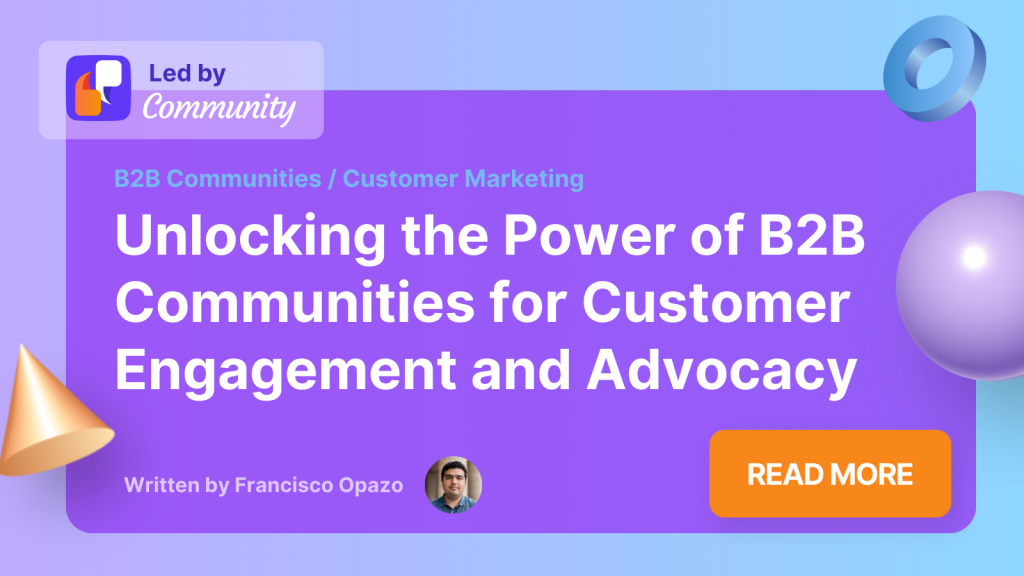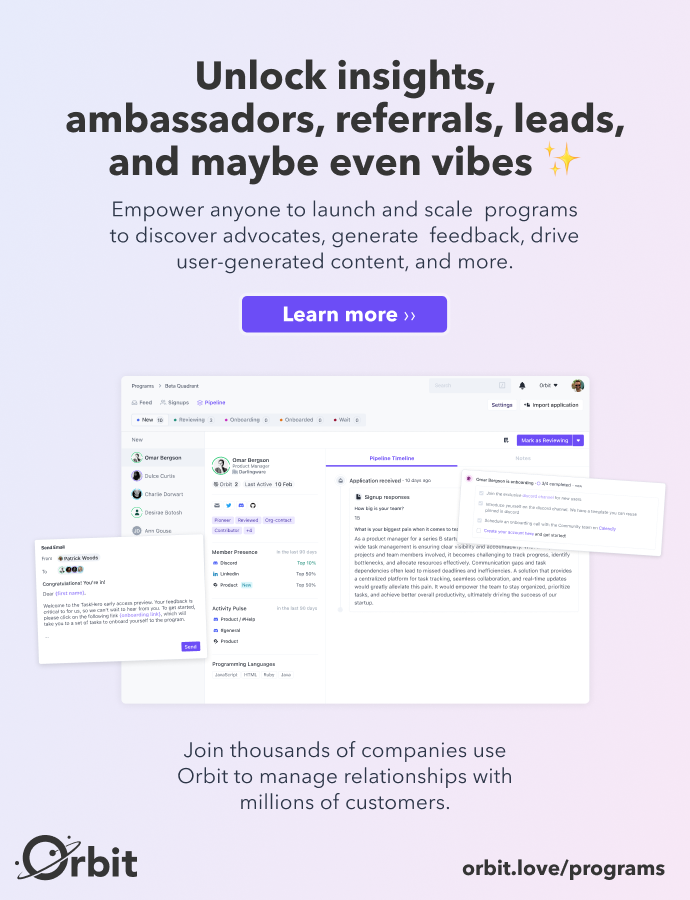In today’s fast-paced business environment, customer engagement and advocacy have become critical factors for success, especially in the B2B sector. Companies are increasingly focusing on post-sale customer interactions to not only retain customers but also to turn them into brand advocates. One of the most effective ways to achieve this is through the creation and management of B2B communities.
The concept of B2B communities is not new, but its importance has been magnified in recent years due to the digital transformation and the need for more personalised customer experiences.
What Are B2B Communities?
B2B communities are platforms where professionals can come together to share knowledge, solve problems, and engage in meaningful discussions. These communities are not just forums for interaction but are also goldmines for customer advocacy and engagement. They serve as an integral part of creating value for your customers and your business.
The Pillars of Customer Marketing
Before diving into the role of communities, it’s essential to understand the pillars of customer marketing, especially in the B2B context:
- Onboarding: The initial phase where customers are introduced to the product or service.
- Events: Organized activities that provide value and engagement opportunities.
- Community: The focus of this article and webinar.
- Advocacy: Turning satisfied customers into brand advocates.
- Voice of Customer and Feedback: Collecting and analyzing customer opinions for improvement.
- Lifecycle Marketing: Strategies aimed at upsell and expansion.
- Customer Communications: Ongoing interactions across the customer journey.

Why B2B Communities Matter
Customer Engagement
B2B communities serve as a hub for customers to engage with each other and the brand. They offer a platform for customers to ask questions, share feedback, and discuss best practices. This engagement is not just beneficial for the customers but also provides valuable insights for the company.
Customer Advocacy
A well-managed community can turn satisfied customers into brand advocates. These advocates not only promote the brand but also contribute to the community by helping other members, thereby creating a virtuous cycle of engagement and advocacy.
Revenue Generation
Communities can also be tied to revenue generation. By tracking metrics like customer engagement levels and advocacy rates, companies can correlate community health to revenue growth. This makes the community a strategic asset for the organization.
Best Practices for Building B2B Communities

Start with a Clear Objective
Before setting up a community, it’s crucial to have a clear objective. Whether it’s customer support, product feedback, or thought leadership, the purpose will guide the community’s structure and activities.
Choose the Right Platform
The choice of platform can make or break your community. Whether it’s a forum-based platform, a social media group, or a dedicated app, the platform should align with your objectives and be easy for members to use.
Foster Engagement
Community managers should actively foster engagement by initiating discussions, sharing valuable content, and encouraging members to interact.
Monitor and Measure
Regularly monitor community metrics like engagement rates, active members, and content quality. These metrics will help you understand the community’s health and make data-driven decisions.
Challenges and Solutions

Scalability
As the community grows, scalability can become an issue. The key is to have a robust platform and community management strategy that can adapt to increasing membership.
Quality Control
Maintaining the quality of discussions and content is essential. Community managers should have the tools to moderate content and ensure that it aligns with the community’s objectives and guidelines.
Data Privacy
With the increasing concerns about data privacy, it’s crucial to ensure that the community complies with regulations like GDPR.
Conclusion
B2B communities are more than just discussion forums; they are strategic assets that can drive customer engagement, advocacy, and even revenue. By understanding the pillars of customer marketing and implementing best practices, companies can build thriving communities that offer value to both the members and the organization.
By investing in community building, companies are not just improving customer engagement but are also setting the stage for long-term relationships and customer advocacy, which are critical for business growth in today’s competitive landscape.
Key Takeaways
- B2B communities are integral for customer engagement and advocacy.
- They fit into the broader strategy of customer marketing, which focuses on the post-sale customer journey.
- Best practices for community building include having a clear objective, choosing the right platform, fostering engagement, and regular monitoring.
- Challenges like scalability, quality control, and data privacy need to be addressed for a successful community.
By embracing B2B communities, companies can create a win-win situation where customers are engaged and satisfied, and the business enjoys higher levels of customer advocacy and revenue growth.







